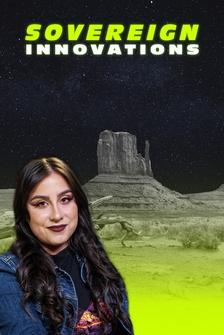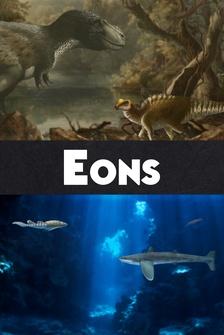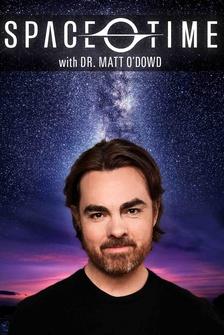- Earth's temperature has fluctuated wildly over its life.
Maybe more importantly, during the past 500 million years, it hit peaks of around 17 degrees Celsius hotter than pre-industrial temperatures.
And even when dinosaurs roamed, it was much hotter than today.
So what's the big deal about one or two degrees of warming today?
Well, looking back into our climate record provides some fascinating lessons and a pretty dire warning about our current situation.
But as it turns out, there is not much new about the method of climate change.
- Greenhouse gases and carbon dioxide in particular is sort of the primary driving force over all of earth history.
We are sort of at the precipice right now, and if we do not take dramatic action within the next several years, then we will miss that opportunity to stabilize warming below truly catastrophic levels.
Holes.
- In this episode, I'm going to walk you through our planet's climate history.
Michael Mann just wrote a book on this very topic called Our Fragile Moment.
So we called him up to help us understand our current situation.
But before we start, let's take a look at this chart of the geologic timescale so you can get your bearings.
As you can see, earth was formed around 4.6 billion years ago, but today we're gonna start our discussion.
When Earth was an ice house or snowball earth, if you will, about two and a half billion years ago.
- Up until that point, the atmosphere had been relatively oxygen free.
The earlier earth atmosphere had very large amounts of methane.
That's part of how the planet was as warm as it was despite the fact that the sun was 30% less bright.
There was an innovation, a biological innovation.
Cyanobacteria developed a new pathway for photosynthesis, a pathway that actually released oxygen.
So these bacteria scavenged all the methane, you know, lowering the greenhouse effect, cooling off the planet, forming ice.
The ice reflects sunlight back to space so you get more cooling.
And we got a runaway ice house where Earth got trapped in this frozen state.
Earth was literally a giant snowball.
There was ice all the way down at the equator at sea level covering the oceans.
- Many scientists believe that CO2 from volcanoes and other processes is what finally thawed the planet 300 million years later.
But how did life survive?
Such extreme conditions?
- We think it survived in hydrothermal vents in the deep ocean, and perhaps shallow pools of melt water at the very surface of the frozen tropical oceans.
- Fast forward a couple billion years, the dinosaurs have come and gone and it starts to get very hot.
- So one of the sort of defining episodes in in climate history is the so-called Paleocene Eocene Thermal Maximum, an episode of rapid warming that came about 10 million years after the demise of the dinosaurs.
The asteroid that struck the planet was already fairly warm, and then it warmed even more fairly rapidly.
- Average temperatures rose by as much as five to eight degrees Celsius, reaching as high as 22.8 degrees Celsius, or 73 degrees Fahrenheit.
And again, the reason for this change in temperature is important.
- 90% of it was a rapid release of carbon dioxide in this case because of an unusually active episode of vulcanism in the North Atlantic near modern day Iceland that put a lot of carbon dioxide into the atmosphere over a relatively short period of time.
And short period of time in this case is like 10,000 years, not nearly as short as today, but what that episode tells us is the warming was caused by the carbon dioxide, and that's what's happening today.
The difference is we can stop it.
- Carbon dioxide is like the Earth's thermostat.
Changes in this key greenhouse gas have been associated with almost every major temperature fluctuation In Earth's history.
Methane plays an important but lesser role as well as aerosols from volcanoes and asteroids.
But carbon dioxide is really the driving force here.
Now, let's zoom in on the last 800,000 years.
When we do that, we see this fascinating saw tooth pattern where earth enters ice ages, then the ice retreats and the earth warms.
Amazingly, our hominid ancestors live through these giant saw tooth swings of temperatures in relatively low populations, and looking at a comparison of temperature in CO2, the relationship is striking.
But about 10,000 years ago, something strange happened instead of slowly descending back into an ice age as one would expect we didn't.
So for the last 10,000 years, humans experienced an unprecedented, warm, stable period of climate history.
And I know you might be wondering why.
Well, there isn't a scientific consensus on it, but one theory suggests that it was actually human agriculture and land use that decreased tree cover and increased atmospheric CO2, just enough to keep temperatures constant when they might have dipped back down to ice H levels.
During that time, the population exploded from as few as 1 million to 8 billion people.
- We built our entire infrastructure that now serves the needs of more than 8 billion people.
That infrastructure was built is tied to a climate that existed for thousands of years, but is now changing very rapidly.
And so that's the fragile moment.
We probably leveraged the carrying capacity of the planet by a factor of 10 through our technology.
And if that infrastructure collapses, we lose our ability to maintain the resources necessary for this global population that exists today.
- But we know the Earth's climate has made wild swings before.
So what's different today?
During the time of the dinosaurs, carbon dioxide levels were much higher than today and the world was much warmer.
But then nature buried that carbon in dead plant matter in animals.
And over time that dead animal and plant matter turned into coal, natural gas and oil.
That's why they're called fossil fuels.
And now we're taking all of that dead stuff that accumulated over a period of 100 million years and we're burning it rapidly.
And remember earlier Michael Mann mentioned that the rapid warming of the Paleocene Eocene Thermal Maximum happened over a period of 10,000 years.
We are currently burning an exorbitant amount of carbon in just a couple of centuries.
- The rapid warming of the past century is unprecedented.
There's nothing like it in at least 2000 years.
We know we're responsible for that warming spike.
- When Michael Mann and his colleagues first published this, so-called Hockey Stick Graph in 1999, it received a lot of backlash, but dozens of independent studies verified the results.
We are truly warming the climate at an unprecedented rate.
Just for an example, the warming that happened after the last ice age 18 to 12,000 years ago, that was a hundred times slower than the warming we're seeing today.
But perhaps more importantly, there are a lot of us now and everything we've built is dependent upon a stable climate.
- Now, the worst case scenario where we fail to act, we continue to warm the planet by, you know, seven, eight, or nine degrees Fahrenheit by the end of the century.
That's where we see massive sea level rise, where we see hundred million or more people displaced by global sea level rise - Based on current energy and emissions projections.
Eight or nine degrees of warming is at the very high range of what's possible.
But I think it's important to look at sea level because it's the primary impact of climate change we're experiencing today that we can actually measure from the past.
And it also shows just how long it takes for the effects of excess heat energy to play out on earth's systems.
The last 2,500 years of sea level mirrored the earth's stable temperature with relatively minor ups and downs.
And if you look at sea level rise over a longer period, you can see that it follows the carbon and temperature graft closely.
But let's zoom in.
At the end of the last ice age, around 20,000 years ago as the earth warmed sea level rose around 130 meters.
But check this out, there's a lag even after warming leveled off, sea level rise continued, and that's important for future projections.
- Consequences are certainly dire, but we can prevent additional warming of the planet and all of the extreme weather events and everything else that goes with that from getting worse.
If we solve this problem, if we attack it at its source, geoengineering carbon capture, no, we just need to stop burning fossil fuels.
- Well, you heard him according to Michael Mann.
It comes down to us humans cause this rapid warming, which means at least in theory, we can stop it.
And that's not something that only Michael Mann believes human cause climate change is pretty much settled science.
But regardless of that fact, and I'm speaking to those who still may be a bit skeptical of all this, those who say that the climate has always changed.
So why should we be concerned now?
Perhaps that is in fact why we should be concerned.
Change is happening.
Change is literally constant.
It happened before human civilization.
It's happening now and it will continue to happen.
But as I digress, this current rate of change is unprecedented and it's almost certainly faster than 8 billion humans can adapt to.
So maybe the question should be this, can humans adopt a nimble mindset on a large scale to halt human caused warming?
And can we adapt to the change that's already baked in to continue to thrive on this planet?















